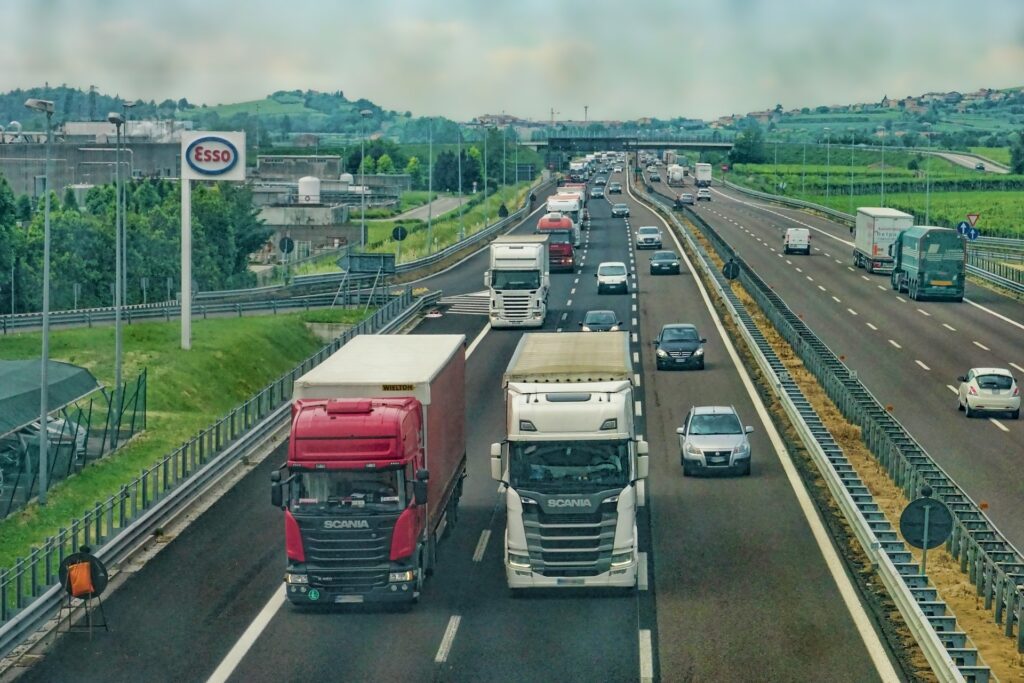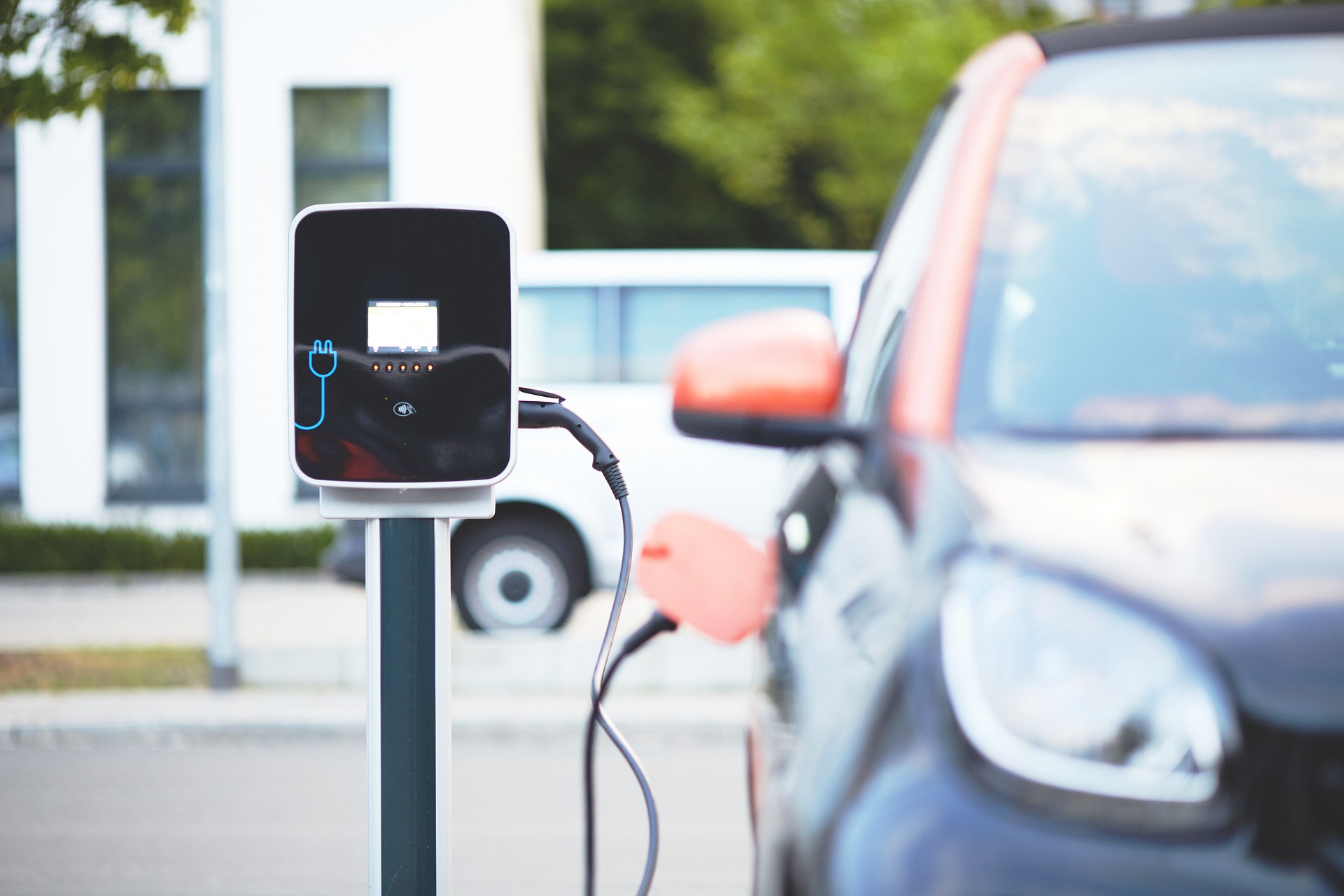
10 Strategies to Reduce Costs and Emissions in Fleets
The world is facing an environmental crisis, and it’s more important than ever for businesses to take steps to reduce their carbon footprint. For many companies, a significant portion of their emissions comes from their fleet of vehicles. But by implementing simple strategies to reduce fleet fuel consumption and emissions, businesses can make a big difference in the fight against climate change.
According to the U.S. Environmental Protection Agency, the transportation sector is the second largest source of greenhouse gas emissions in the United States, accounting for 28% of total emissions in 2019. And for many businesses, a significant portion of those emissions come from their fleet of vehicles.
But by taking steps to reduce fuel consumption and emissions in their fleet, businesses can make a big impact in the fight against climate change. In this article, we’ll be discussing 10 simple strategies for cutting fleet fuel costs and reducing CO2 emissions. By implementing these strategies, businesses can significantly reduce their carbon footprint and make a meaningful contribution to the fight against climate change.
Regular Maintenance

Regular maintenance is an important aspect of reducing fleet fuel consumption and emissions. By keeping vehicles in good working condition, businesses can improve fuel efficiency and reduce emissions. According to the U.S. Department of Energy, properly maintaining a vehicle can improve its fuel efficiency by up to 4%. And for a fleet of vehicles, those small improvements can add up to make a big difference in reducing emissions.
There are a few specific maintenance tasks that can have a particularly big impact on reducing fleet fuel consumption and emissions. These include:
- Regular oil changes: Dirty oil can cause an engine to work harder, which leads to increased fuel consumption and emissions. Changing the oil on a regular basis keep engines running smoothly, reducing fuel consumption.
- Tire rotations: Properly inflated and rotated tires can improve fuel efficiency by up to 3%. By rotating tires on a regular basis, businesses can ensure that they wear evenly and maintain proper pressure, which can help reduce fuel consumption and emissions.
- Air filter replacement: A dirty air filter can reduce the amount of air that reaches the engine, which can lead to decreased fuel efficiency and increased emissions. By replacing the air filter on a regular basis, businesses can ensure that engines are getting the air they need to run efficiently and reduce fuel consumption and emissions.
By performing regular maintenance on fleet vehicles, businesses can improve fuel efficiency and reduce emissions. It’s a simple yet effective strategy to cut down on fuel costs and emission, and it’s one that every fleet manager should be aware of.
Telematics

Telematics is a powerful tool that businesses can use to optimize fleet fuel efficiency and reduce emissions. By using GPS tracking, engine diagnostics, and other telematics features, businesses can gain valuable insights into how their fleet vehicles are performing, and make data-driven decisions to improve fuel efficiency and reduce emissions.
According to a study by the National Renewable Energy Laboratory (NREL), the use of telematics can lead to a fuel savings of up to 20%. And for a fleet of vehicles, those savings can add up to make a big difference in reducing emissions.
Here are a few specific telematics features that can help businesses reduce fleet fuel consumption and emissions:
- GPS tracking: By tracking the location and movement of fleet vehicles in real-time, businesses can optimize routes to reduce fuel consumption and emissions.
- Engine diagnostics: By monitoring engine performance and identifying potential issues, businesses can make adjustments to improve fuel efficiency and reduce emissions.
- Idling monitoring: By monitoring how long vehicles are idling, businesses can reduce unnecessary idling, which can save fuel and reduce emissions.
- Driver behavior monitoring: By monitoring driver behavior, such as speeding, harsh braking, and rapid acceleration, businesses can provide feedback and coaching to improve driving habits and reduce fuel consumption and emissions.
Telematics is a powerful tool that businesses can use to optimize fleet fuel efficiency and reduce emissions. By using data to gain insights into how their fleet vehicles are performing, businesses can make informed decisions to improve fuel efficiency and reduce emissions. By implementing telematics, businesses can take a significant step towards reducing their carbon footprint and making a real difference in the fight against climate change.
Driver Training

Driver training is an essential aspect of reducing fleet fuel consumption and emissions. By educating drivers on eco-friendly driving techniques and providing them with the skills and knowledge to operate vehicles efficiently, businesses can improve fuel efficiency and reduce emissions. According to a study by the Transport Environment, driver training can lead to a reduction in fuel consumption of up to 15%. And for a fleet of vehicles, those savings can add up to make a big difference in reducing emissions.
There are a few specific driver training topics that can have a particularly big impact on reducing fleet fuel consumption and emissions. These include:
- Eco-driving: Teaching drivers how to drive more efficiently can improve fuel efficiency and reduce emissions. Techniques such as smooth acceleration and braking, and avoiding unnecessary idling can make a big difference.
- Defensive driving: Teaching drivers how to anticipate and respond to hazards on the road can help reduce fuel consumption and emissions.
- Route planning: By teaching drivers how to plan efficient routes, businesses can reduce fuel consumption and emissions by avoiding traffic and finding the most efficient routes.
- Fuel-efficient driving: By educating drivers on how to operate vehicles in a fuel-efficient manner, businesses can improve fuel efficiency and reduce emissions.
Driver training is an essential aspect of reducing fleet fuel consumption and emissions. By providing drivers with the knowledge and skills they need to operate vehicles efficiently, businesses can improve fuel efficiency and reduce emissions.
Electric and Hybrid Fleet Vehicles

Electric and hybrid fleet vehicles are becoming increasingly popular as a way to reduce fleet fuel consumption and emissions. These types of vehicles use significantly less fuel than traditional gasoline or diesel vehicles, and produce significantly fewer emissions. According to the U.S. Environmental Protection Agency, electric vehicles produce zero emissions, while hybrids produce significantly less emissions than traditional gasoline vehicles.
There are a few key benefits to switching to electric or hybrid fleet vehicles, including:
- Lower fuel costs: Electric and hybrid vehicles use significantly less fuel than traditional gasoline or diesel vehicles, which can lead to significant savings on fuel costs.
- Reduced emissions: Electric vehicles produce zero emissions, while hybrids produce significantly less emissions than traditional gasoline vehicles. This can help businesses reduce their carbon footprint and make a real difference in the fight against climate change.
- Government incentives: Many governments offer incentives for businesses to switch to electric or hybrid fleet vehicles, such as tax credits or grants.
- Increased efficiency: Electric and hybrid vehicles are more efficient than traditional gasoline or diesel vehicles, which can lead to improved fuel efficiency and reduced emissions.
Switching to electric or hybrid fleet vehicles is a big step towards reducing fleet fuel consumption and emissions. By making the switch, businesses can reduce their fuel costs, lower their emissions, and make a real difference in the fight against climate change. As the technology of Electric vehicles and hybrid vehicles is improving, the costs are coming down making them more accessible to more businesses, it’s becoming increasingly easier to make the switch. Businesses should consider the benefits of electric and hybrid fleet vehicles when planning their fleet renewal strategy.
Route Planning

Proper route planning is an essential aspect of reducing fleet fuel consumption and emissions. By optimizing routes, businesses can reduce the distance that vehicles need to travel, which can lead to significant savings on fuel costs and reduced emissions. According to a study by the Journal of Cleaner Production, route optimization can lead to a reduction in fuel consumption of up to 20%. And for a fleet of vehicles, those savings can add up to make a big difference in reducing emissions.
There are a few key strategies for optimizing routes, including:
- Avoiding traffic: By avoiding traffic and congested areas, businesses can reduce the time that vehicles spend idling, which can save fuel and reduce emissions.
- Finding the most efficient routes: By using tools such as mapping software and GPS tracking, businesses can find the most efficient routes and reduce the distance that vehicles need to travel.
- Planning for multiple stops: By planning routes that include multiple stops, businesses can reduce the distance that vehicles need to travel, which can save fuel and reduce emissions.
Proper route planning is an essential aspect of reducing fleet fuel consumption and emissions. By optimizing routes, businesses can reduce the distance that vehicles need to travel, which can lead to significant savings on fuel costs and reduced emissions.
Tire Pressure

Proper tire pressure is an important aspect of reducing fleet fuel consumption and emissions. When tires are under-inflated, they can cause increased rolling resistance, which can lead to decreased fuel efficiency and increased emissions. According to the U.S. Department of Energy, properly inflating tires can improve fuel efficiency by up to 3%. And for a fleet of vehicles, those savings can add up to make a big difference in reducing emissions.
There are a few key strategies for maintaining proper tire pressure in fleet vehicles, including:
- Regularly checking tire pressure: By regularly checking tire pressure and making sure that tires are properly inflated, businesses can ensure that they are running at optimal efficiency and reduce fuel consumption and emissions.
- Monitoring for leaks: By monitoring for leaks, businesses can ensure that tires are not losing pressure and maintain optimal efficiency.
- Rotating tires: By rotating tires on a regular basis, businesses can ensure that they wear evenly and maintain proper pressure, which can help reduce fuel consumption and emissions.
Proper tire pressure is an important aspect of reducing fleet fuel consumption and emissions. By taking the time to regularly check tire pressure and make sure that tires are properly inflated, businesses can improve fuel efficiency and reduce emissions.
Speed

Speed is a key factor in reducing fleet fuel consumption and emissions. As vehicles travel at higher speeds, they require more fuel to maintain that speed, which leads to increased fuel consumption and emissions. According to the U.S. Department of Energy, every 5 mph driven over 50 mph is like paying an additional $0.24 per gallon for gas. And for a fleet of vehicles, those increased fuel costs can add up to make a big difference in emissions.
There are a few key strategies for maintaining a safe and efficient speed on the road, including:
- Adhering to posted speed limits: By adhering to posted speed limits, businesses can ensure that vehicles are not traveling at excessive speeds, which can save fuel and reduce emissions.
- Avoiding speeding: By avoiding speeding, businesses can reduce the amount of fuel required to maintain a high speed, which can save fuel and reduce emissions.
- Using cruise control: By using cruise control, businesses can help drivers maintain a consistent speed and reduce the amount of fuel required to accelerate and decelerate, which can save fuel and reduce emissions.
Speed is a key factor in reducing fleet fuel consumption and emissions. By maintaining a safe and efficient speed on the road, businesses can reduce fuel consumption and emissions. By adhering to posted speed limits and avoiding speeding, businesses can take a significant step towards reducing their carbon footprint.
Eco-Driving Programs

Eco-driving programs are an effective way for businesses to reduce fleet fuel consumption and emissions. These programs educate drivers on eco-friendly driving techniques and provide them with the skills and knowledge to operate vehicles efficiently, which can improve fuel efficiency and reduce emissions. According to a study by the Transport Environment, eco-driving programs can lead to a reduction in fuel consumption of up to 15%. And for a fleet of vehicles, those savings can add up to make a big difference in reducing emissions.
There are a few key elements of an eco-driving program, including:
- Education: Drivers are educated on eco-friendly driving techniques such as smooth acceleration and braking, and avoiding unnecessary idling.
- Monitoring: Drivers’ performance is monitored to ensure they are applying the techniques learned.
- Feedback and coaching: Drivers receive feedback and coaching to improve their eco-driving skills.
- Incentives: Companies can implement incentives for drivers who demonstrate consistent eco-driving practices.
Eco-driving programs are an effective way for businesses to reduce fleet fuel consumption and emissions. By educating drivers on eco-friendly driving techniques, businesses can improve fuel efficiency and reduce emissions.
Fuel-Efficient Fleet Vehicles

Fuel-efficient fleet vehicles are a powerful way for businesses to reduce fleet fuel consumption and emissions. These types of vehicles are designed to use less fuel and produce fewer emissions than traditional gasoline or diesel vehicles, which can lead to significant savings on fuel costs and reduced emissions. According to the U.S. Environmental Protection Agency, fuel-efficient vehicles can improve fuel efficiency by up to 50%. And for a fleet of vehicles, those savings can add up to make a big difference in reducing emissions.
There are a few key benefits of fuel-efficient fleet vehicles, including:
- Lower fuel costs: Fuel-efficient vehicles use less fuel than traditional gasoline or diesel vehicles, which can lead to significant savings on fuel costs.
- Reduced emissions: Fuel-efficient vehicles produce fewer emissions than traditional gasoline or diesel vehicles, which can help businesses reduce their carbon footprint and make a real difference in the fight against climate change.
- Government incentives: Many governments offer incentives for businesses to purchase fuel-efficient vehicles, such as tax credits or grants.
- Increased efficiency: Fuel-efficient vehicles are more efficient than traditional gasoline or diesel vehicles, which can lead to improved fuel efficiency and reduced emissions.
Fuel-efficient fleet vehicles are a powerful way for businesses to reduce fleet fuel consumption and emissions. By purchasing vehicles that are designed to use less fuel and produce fewer emissions, businesses can reduce their fuel costs, lower their emissions, and make a real difference in the fight against climate change. As the technology of fuel-efficient vehicles is improving, the costs are coming down making them more accessible to more businesses, it’s becoming increasingly easier to make the switch. Businesses should consider the benefits of fuel-efficient fleet vehicles when planning their fleet renewal strategy.
Fuel Management

Fuel management is an essential aspect of reducing fleet fuel consumption and emissions. By monitoring and managing fuel usage, businesses can gain valuable insights into how their fleet vehicles are performing, and make data-driven decisions to improve fuel efficiency and reduce emissions. According to a study by the Ford Fleet Solutions, implementing a fuel management program can lead to a reduction in fuel consumption of up to 10%. And for a fleet of vehicles, those savings can add up to make a big difference in reducing emissions.
There are a few key strategies for managing fuel usage in fleet vehicles, including:
- Fuel tracking: By tracking fuel usage, businesses can identify patterns and make adjustments to improve fuel efficiency and reduce emissions.
- Fuel purchasing: By purchasing fuel from a reputable supplier, businesses can ensure that they are getting the best quality fuel at the best price, which can help to reduce fuel costs and emissions.
- Fuel auditing: By auditing fuel usage, businesses can identify and correct any discrepancies or abuses, which can help to reduce fuel costs and emissions.
- Fuel reporting: By tracking and reporting on fuel usage, businesses can gain valuable insights into how their fleet vehicles are performing and make data-driven decisions to improve fuel efficiency and reduce emissions.
Fuel management is an essential aspect of reducing fleet fuel consumption and emissions. By monitoring and managing fuel usage, businesses can gain valuable insights into how their fleet vehicles are performing, and make data-driven decisions to improve fuel efficiency and reduce emissions. By implementing a fuel management program, businesses can take a significant step towards reducing their carbon footprint.
Conclusion

In conclusion, reducing fuel consumption and emissions in your fleet is a critical step towards building a more sustainable and eco-friendly business. By implementing strategies such as regular maintenance, telematics, driver training, and investing in electric and hybrid fleet vehicles, businesses can improve fuel efficiency and reduce emissions. Additionally, by implementing eco-driving programs, optimizing routes, maintaining proper tire pressure, adhering to posted speed limits, implementing fuel management programs, and investing in fuel-efficient fleet vehicles, businesses can take significant steps towards reducing their carbon footprint and making a real difference in the fight against climate change. With the right steps, the cost savings associated with reducing fuel consumption and emissions can be significant, and it’s important to take those steps to ensure a sustainable future.
If you have a business and are looking for implementing some goals to reduce emissions, please take a look here.